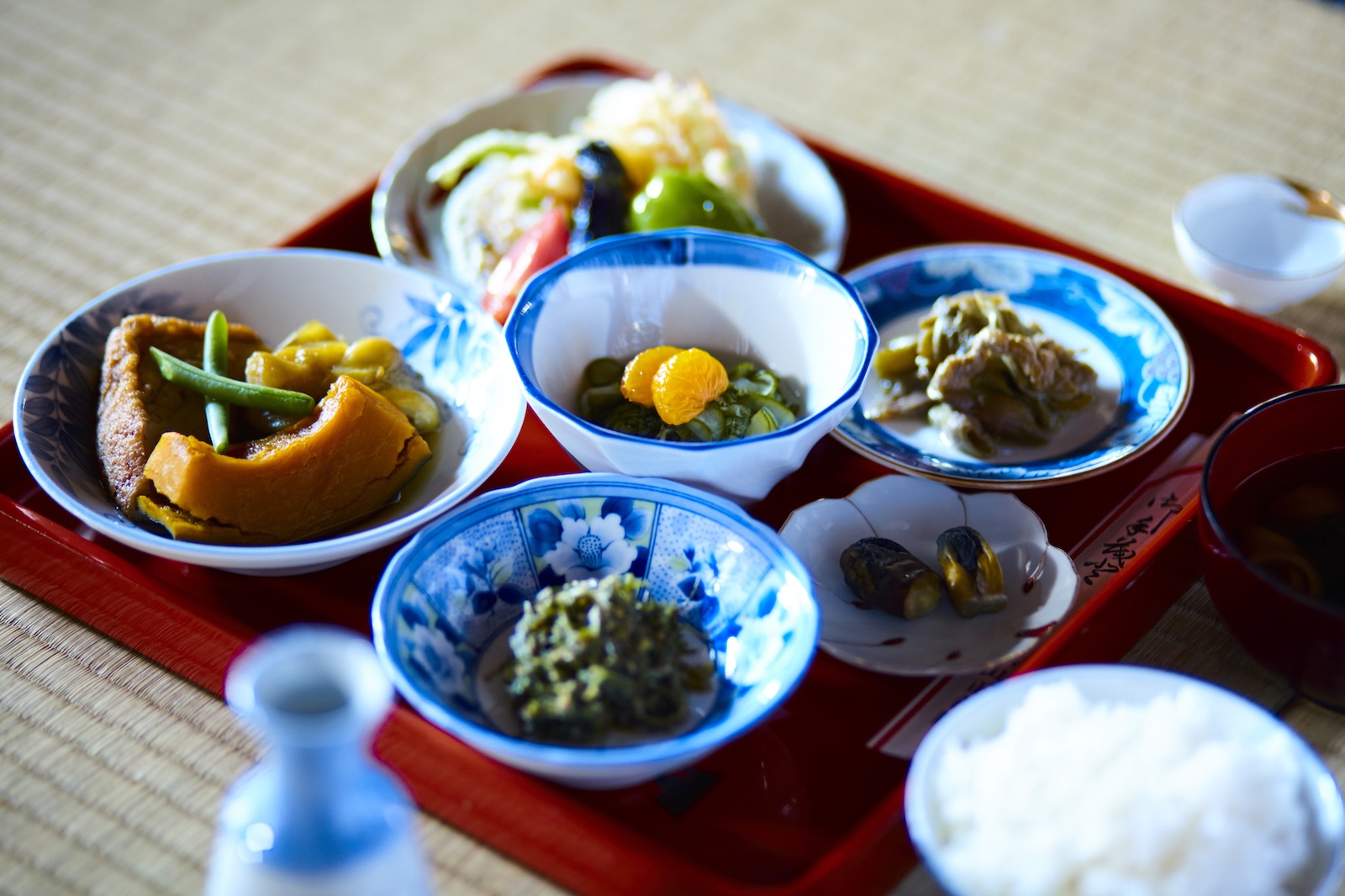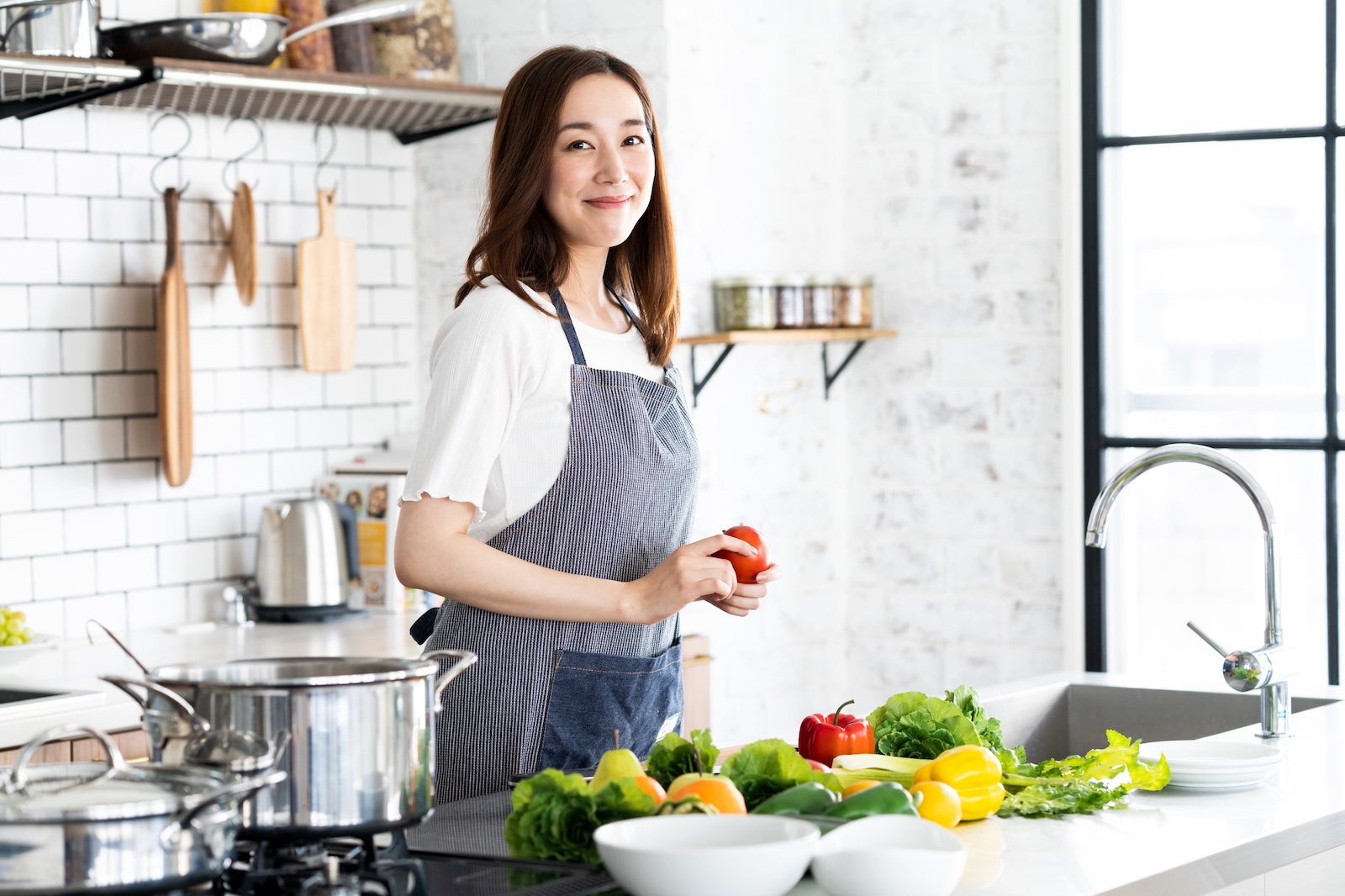As we gear up to welcome 2025, many of us are seeking new ways to improve our health and well-being. What better inspiration than Japan: a country renowned for its emphasis on high-quality food, mindfulness and longevity? As a Tokyo-based dietitian, I’ve found a wealth of wellness inspirational ideas in Japanese culture, many of which can be implemented to improve your health wherever you are in the world.
Below are a few of my favorite Japanese-inspired resolutions that can help you uniquely cultivate a healthier lifestyle. From nutrient-rich foods to traditional Japanese wisdom, these resolutions can guide you toward a more vibrant and fulfilling year ahead.
1. Eat like a Japanese Buddhist monk: Add more vegetarian meals into your diet

Caption. Image: ITOKUN/Pixta
Shojin ryori is a traditional Japanese cuisine originating from Buddhist temples that focuses on vegetarian and plant-based dishes. Instead of using meat, fish or other animal-based foods, shojin ryori selects seasonal, natural ingredients and prepares them simply to highlight their inherent qualities.
Although animal-based proteins can be part of a well-balanced diet, adding more plants and plant-based proteins has many health benefits. A report in the National Library of Medicine has shown that adopting a plant-based diet may aid weight loss as well as lowering your blood pressure, cholesterol and blood sugar levels. It may also lower your risk of developing heart disease and increase your fiber intake, which is often lacking in many of the diets I see in my clinical nutrition practice.
If you’d like to add more plant-based meals to your diet, there are many options. For vegetarian meals using traditional Japanese ingredients, consider a shojin ryori cookbook or search for “shojin ryori recipes” online. If that feels too intimidating, you can start smaller by swapping out meat for plant-based proteins like tofu, edamame, beans and legumes in your favorite recipes.
For those in Japan or visiting, consider stopping by a shojin ryori restaurant for more plant-based culinary inspiration. From vegetarian cafes to the Michelin-starred Daigo, there are numerous options in Tokyo and beyond.
For a truly authentic experience, veggie fans should stay at a shukudo, or Buddhist temple lodging. Here one can enjoy shojin ryori as prepared by monks while also learning more about Buddhism through meditation and other temple activities.
2. Try traditional Japanese practice: Eat more mindfully

Caption. Image: mits/Pixta
Overeating and an inability to gauge appropriate portion sizes are common issues for many of my patients. It can be difficult to tune into your body and listen to what it needs when many of us are always on the go and juggling the demands of work, school, childcare or other obligations.
For these patients, it can be helpful to discuss the Japanese concept of hara hachi bu. This traditional practice, which loosely translates to “eat until you are eighty percent full,” is used by the Japanese as a reminder to tune into your body’s hunger and satiety signals and stop eating before you reach total fullness. This concept is especially popular in Okinawa, where the island’s residents are notorious for their long lifespans and low rates of obesity and chronic disease.
Upon practicing more mindful eating, many of my patients are shocked to realize how often they were eating past their ideal fullness levels because they were bored, busy or distracted. While it takes time to get used to trusting your body to regulate your food intake, embracing the traditional wisdom of hara hachi bu can promote a healthy and balanced relationship with food.
Practical tips for implementing hara hachi bu include slowing down the pace at which you eat a meal to better gauge your satiety levels and to use a “hunger scale” to rate your hunger before you begin the meal. Once you are eating, refer back to the hunger scale to stop eating when you reach a fullness level of seven or eight, which is similar to the advised eighty percent full.
3. Learn new Japanese cooking techniques: Banish boredom in the kitchen

Caption. Image: kou/Pixta
When my patients complain of not knowing what to cook for dinner only to order takeout instead, I can relate. I love to cook, and still I find myself in a cooking rut on occasion. Yet learning how to prepare your meals at home using whole food ingredients is crucial when it comes to improving your health.
Other National Library of Medicine studies have consistently linked frequent eating out to lower diet quality, as well as low intakes of health-promoting foods such as fruits and vegetables, and nutrients like fiber, vitamins and minerals.
If you feel uninspired to cook, try challenging yourself to learn a new, Japanese-inspired cooking technique. From learning to make temaki sushi (hand rolls) to perfecting your nabe, or hot pot, recipe, there are endless options you can choose from. For novice cooks, I recommend visiting the Just One Cookbook website for beginner-friendly Japanese recipes and cooking tutorials.
For advanced cooks proficient in the ways of the kitchen, try teaching someone else to make a new dish. When my daughter’s hoikuen (Japanese daycare facility) sent everyone home with satsumaimo (Japanese sweet potato) that the kids had harvested themselves from a field trip, I took it as an opportunity to teach my daughter some cooking skills. On the advice of the hoikuen, who provided a simple sweet potato snack recipe, we spent an afternoon peeling, cooking, and mashing the potatoes together. Showing her how to transform raw ingredients into a finished product was inspiring, and although the experience was for her benefit, it left me motivated and feeling more creative too.
Embracing Japanese-inspired healthy resolutions is more than just a way to enhance your well-being – it’s also a way to inspire creativity, connect with your body, and discover another culture. Happy New Year to all and wishing you and your loved ones your healthiest year yet!
Victoria Lindsay, MS RD, is a registered dietitian and nutrition consultant working at Tokyo Medical & Surgical Clinic and her Tokyo-based private practice. To get in touch, please visit: www.victorialindsayrd.com.
© Japan Today











 English (US) ·
English (US) ·